Khadia
Khadia N.E.Br.
Family: Aizoaceae
Common names: khadiwortel (Afr.)
Introduction
The succulent plants of this genus have long been known as an additive to alcoholic fermentations, making them extra potent. It is the thick underground roots that are added to the brews. The plants make attractive rockery subjects, forming low, dense clumps with showy flowers.

Description
Description
The low , clumps with large, fibrous roots are characteristic of Khadia . The only exception is K. borealis , which has a creeping habit, long internodes and roots at the nodes. Leaves of all species are succulent, with sharp tips. In all but the above species the leaves are densely arranged. Flowers are white or shades of pink and are quite large and showy. The genus name is derived from its use as a potent additive to fermentations known as khadi . The fruits are capsules containing a varying number of locules (compartments).
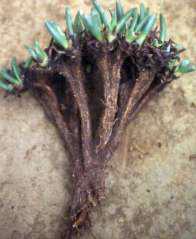
Distribution and habitat
Distribution description
This mesemb genus comprising six species is confined to grassland or open woodland of the northern provinces of South Africa. This is unusual, as most other mesemb genera are found further south, the highest diversity being in the Succulent Karoo. Habitats where these species thrive are rocky spots with shallow soil in summer rainfall areas. Altitudes vary, but are generally above 1 400 m (Chesselet et al. 1998).
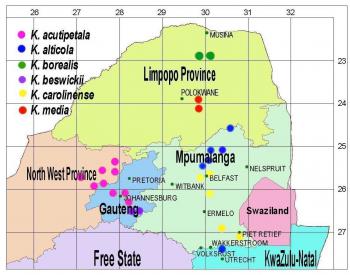
Ecology
Ecology
The rocky situations where these plants occur, ensure that little else can compete with them. They can withstand fire, as rocky places have low biomass and less organic material that can fan a fire. Leaves that are singed recover quickly.
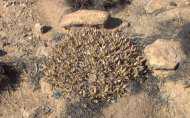
Like most other mesembs, seeds are borne in capsules which open when wet (hydrochastic), closing again once they dry out. These capsules have been used as a taxonomic tool to separate the species.
In times of extreme drought, Khadia leaves are eaten by hares and insects but this seems to have little effect on the plants, as recovery is swift. Areas where these plants grow often receive frost in winter and in some parts of Mpumalanga snow occasionally falls at high altitude. The plants are, however, well adapted to withstand these temperature fluctuations.
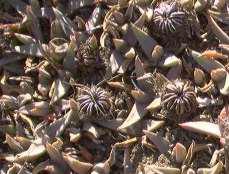
The pollinators of Khadia species are unknown, as this aspect of their biology has not yet been studied.
Uses
Use
Khadias are not very popular as garden plants. They have been used traditionally as a fermentation agent, but traditional brews containing these plants are becoming increasingly scarce.
Growing Khadia
Grow
Attractive garden plants when planted in the right setting, species of Khadia can be a colourful addition to a rockery. It forms a compact, low-growing clump, which increases in size with age . Plants like aloes or other succulents requiring similar growing conditions are recommended as companion plants. Soil should be well drained and porous, containing a good deal of humus. As Khadia is a summer rainfall genus, it should be watered very well in summer (southern hemisphere). Water very sparingly in winter.
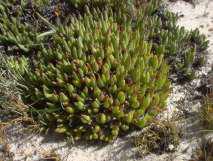
The most attractive species is K. acutipetala as it has the largest flowers of the brightest pink hue, standing out in a rockery when flowering.
These plants make excellent potplants and are prized by succulentophiles for their compact nature and attractive flowers.
Recent studies (Knoll & Hankey 2003) have shown that Khadia beswickii can be propagated by rooting the leaves in a well-drained growth medium such as river sand mixed with peat-based potting soil. Most species of Khadia grow from seed and stem cuttings, but plants take quite long to reach a noticeable size when grown from seeds.
Some species are susceptible to leaf scale and this can even be seen in populations growing in the wild. Conditions that are too moist with insufficient air -flow can lead to red spider invasions, which are difficult to eradicate.
All six species in the genus are confined to summer rainfall areas in the northern provinces of South Africa.
Species

K. acutipetala (N.E.Br.) N.E.Br. was the first species to be described and is also the type of the genus. This is the species most frequently used as an additive to alcoholic fermentations and it can be distinguished by its large, bright pink flowers. It is the most common species and is found from the Magaliesberg in the North-West Province to just south of Heidelberg, Gauteng. More collections may indicate a wider distribution. See more info below.
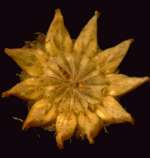
K. acutipetala (N.E.Br.) N.E.Br. usually grows in shallow soil between quartzitic rocks. The capsules have six to eight locules that always return to the closed position after they have opened. This is not an endangered species, but the habitat is being lost as housing in Gauteng expands.

K. alticola Chesselet & H.E.K.Hartmann was described in 1995 and is found along the Steenkampsberg, Mpumalanga, the surrounding high-lying areas and also to the south in northern KwaZulu-Natal . See more info below.
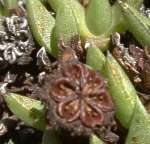
K. alticola . Its name is derived from its occurrence at high altitudes. It also grows in rocky places. The flowers are pale pink or white and the capsules tend to gape open once wetted, never closing completely again. Although plentiful in habitat, its occurrence is not widespread.
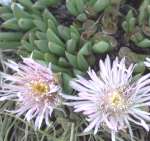
K. beswickii (L.Bolus) N.E.Br. is found between Heidelberg and Nigel in Gauteng and was once considered to be extinct, but populations of these plants have recently been rediscovered. It forms large, flat clumps that grow in quartzitic rocks. See more info below.
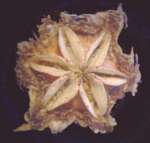
K. beswickii is found between Heidelberg and Nigel in Gauteng and was once considered to be extinct, but populations of these plants have recently been rediscovered. It forms large, flat clumps that grow in quartzitic rocks. The flowers can be very pale pink to deeper pink and the capsules have five to eight locules, sometimes gaping once wetted. It is listed as critically endangered in Gauteng as habitat loss due to urbanization is a threat to this species.
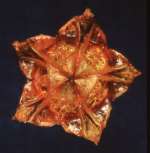
K. borealis L. Bolus is an outlier found in the province of Limpopo. It differs in its creeping habit, with rooting nodes and long internodes. It grows in shallow soils overlaying flat rocky plates at high altitudes where the plants receive mist. The name is derived from the fact that this is the northe rnmo st species of the genus. The flowers are bright white . The capsules have four to eight locules (Chesselet et al . 1998) that close completely after they have opened and are no t woody as in other species of this genus.
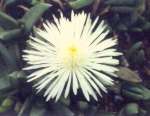
K. carolinensis (L.Bolus) L.Bolus is found on quartzitic rocks near Carolina in Mpumalanga and also grows further to the south and north. The name refers to the place where the first specimen was found (Carolina). See more info below.
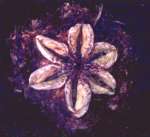
K. carolinensis. It forms large, flattened clumps that can be up grow up to 0.5 m in diameter. It has white to cream -coloured flowers and six-locular capsules that are woody and close fully again after they have opened.

K. media P.Winter & N.Hahn, the most recently described addition to the genus (Winter & Hahn 1999), differs from the others in that it grows on soils derived from igneous rocks while all the others grow in soils derived from sedimentary rocks. The name refers to its distinguishing characters, which bridge the differences between other species. The flowers are white and the capsules are five- to six-locular, closing again after they have opened.
References
- Chesselet, P. & Hartmann, H.E.K. 1995. Khadia alticola Chess. & H.E.K. Hartm. spec nov. (Mesembryanthemaceae/Aizoaceae). Aloe 32: 46-49.
- Chesselet, P., Hartmann, H.E.K., Hahn, N., Burgoyne, P.M. & Smith, G.F. 1998. Taxonomic notes on the genus Khadia (Mesembryanthemaceae/Aizoaceae) Bothalia 28: 25-33.
- Knoll, C. & Hankey, A. 2003. Co-operative conservation initiative for rare and threatened plants. Urban Green File 8,2: 22-25.
- Leistner, O.A. (ed.). 2000. Seed plants of southern Africa: families and genera. Strelitzia 10. National Botanical Institute, Pretoria.
- Winter, P.J.D. & Hahn, N. 1999. A new species of Khadia N.E.Br. (Mesembryanthemaceae) from the Northern Province of South Africa. Aloe 36: 16-19.
Credits
Priscilla Burgoyne
National Herbarium, Pretoria
November 2004
Plant Attributes:
Plant Type: Succulent
SA Distribution:
Soil type:
Flowering season:
PH:
Flower colour:
Aspect:
Gardening skill:
Special Features:
Horticultural zones






Rate this article
Article well written and informative
Rate this plant
Is this an interesting plant?
Login to add your Comment
Back to topNot registered yet? Click here to register.